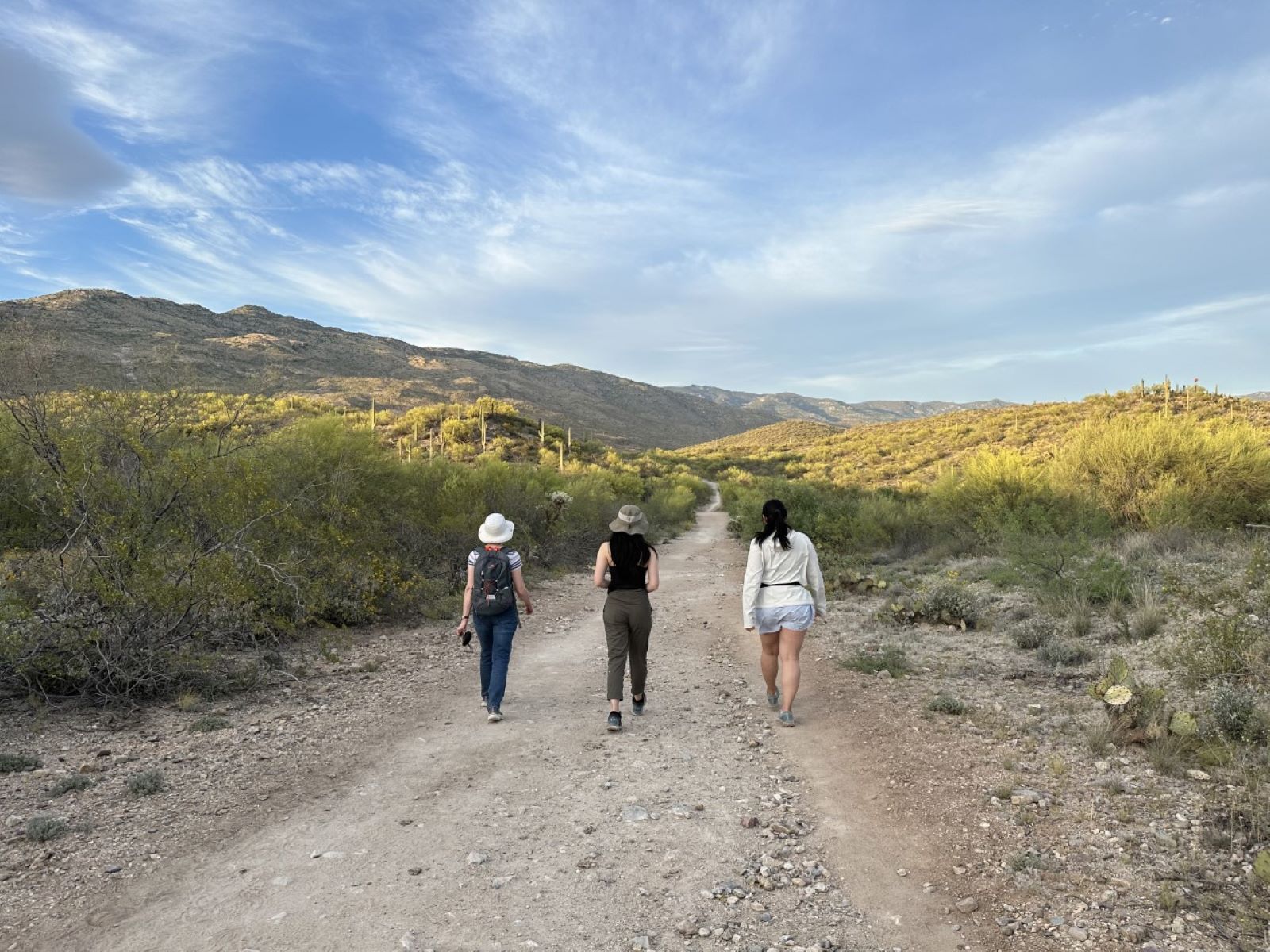To avoid bees when hiking, avoid wearing bright colors and floral scents that attract them. Stick to proper trail etiquette to minimize disturbances to bee nests.
When exploring the great outdoors on a hike, encountering bees can be a natural and potentially hazardous situation. Understanding how to prevent bee encounters and react appropriately is crucial for a safe and enjoyable hiking experience. By following some simple guidelines and staying alert to your surroundings, you can minimize the risk of disturbing bees and protect yourself from potential stings.
In this guide, we will discuss effective strategies to avoid bees while hiking so that you can fully appreciate the beauty of nature without any unwanted encounters. Let’s delve into the tips and tricks for safely navigating bee-populated areas during your outdoor adventures.

Understanding Bee Behavior
Understanding Bee Behavior is crucial for safely navigating through hiking trails. Bee behavior can vary based on factors like their life cycle and types. By familiarizing yourself with these aspects, you can avoid unwanted encounters with bees.
Life Cycle Of Bees
Bees go through a simple life cycle that consists of four stages: egg, larva, pupa, and adult. Understanding this cycle helps in predicting when bees may be more active.
Types Of Bees
- Honey bees: Known for their role in pollination and honey production.
- Bumblebees: Recognized by their larger size and distinctive buzzing sound.
- Solitary bees: Nest alone and do not live in colonies like honey bees.
Credit: www.alltrails.com
Identifying Potential Hazards
When hiking, it’s crucial to be aware of potential bee hazards to prevent any unwanted encounters. Understanding bee habitats and signs of aggression can help you stay safe on the trails.
Recognizing Bee Habitats
- Look for areas with abundant flowers, water sources, and shade, as these attract bees.
- Avoid dense vegetation, hollow trees, and rock crevices where bees may build their nests.
- Stay away from wildflowers, orchards, and apiaries where bees gather nectar.
Signs Of Aggression
- Watch out for sudden buzzing sounds, increased bee activity, and hovering bees near you.
- If you spot a swarm or nest, move away calmly and avoid disturbing them.
- Pay attention to bees flying in a direct line towards you or bumping into you, as these are aggressive behaviors.
Preparing For A Hike
Hiking is a wonderful way to connect with nature and enjoy the great outdoors. However, encounters with bees can quickly turn a relaxing excursion into a stressful situation. Taking the necessary precautions and being mindful of bee habitats can help minimize the risk of bee encounters while hiking. Before hitting the trails, it’s important to prepare accordingly to avoid potential bee stings. Here are some essential tips for preparing for a hike.
Wearing Appropriate Clothing
Dressing appropriately can greatly reduce the likelihood of bee encounters and stings. When hiking, it’s advisable to wear light-colored, long-sleeved shirts and long pants to provide protection from bee stings. Bees are generally attracted to bright colors, floral patterns, and strong scents, so it’s best to avoid wearing brightly colored or floral clothing and heavy perfumes that might attract them. Additionally, wearing closed-toe shoes and tucking pant legs into socks can provide an extra layer of protection against potential bee stings.
Carrying Necessary Items
It’s essential to pack a few key items that can come in handy in the event of a bee encounter. Carrying a first-aid kit containing antihistamines, antiseptic wipes, and tweezers can be crucial for treating bee stings promptly. It’s also wise to bring along insect repellent to deter bees and other insects. Ensure the repellent is specifically designed to repel bees and take note of its application instructions to use it effectively. Being prepared with these essential items can provide peace of mind and quick relief if a bee sting occurs while hiking.
Credit: www.alltrails.com
Reacting To Bee Encounters
Encountering bees while hiking can be nerve-wracking, but knowing how to react can make all the difference. Remaining calm and handling bee stings properly can help ensure a safe and enjoyable hiking experience. In this section, we will explore some effective strategies for reacting to bee encounters on the trail.
Remaining Calm
Reacting with panic or sudden movements can provoke bees to become aggressive. Therefore, it is of utmost importance to remain calm in the face of a bee encounter. By staying composed, you decrease the likelihood of being stung or attracting other bees to your area. Remember, bees are typically more interested in pollinating flowers than engaging with humans.
If a bee comes near you, avoid swatting at it or making abrupt gestures. Instead, maintain a relaxed and steady posture. Move away slowly and deliberately, keeping a safe distance from the bee. This will signal to the bee that you are not a threat and reduce the chances of it feeling the need to defend itself.
Handling A Bee Sting
Despite our best efforts, occasionally bee stings may still occur. When this happens, it’s important to know how to handle the situation promptly and effectively. Here’s what you should do:
- Remove the stinger as quickly as possible. Use a scraping motion with a straight-edged object, such as a credit card, to gently scrape off the stinger. Avoid squeezing the stinger, as it may release more venom.
- Wash the area with mild soap and water to prevent infection.
- Apply a cold compress or ice pack to reduce swelling and soothe the affected area.
- Consider taking an over-the-counter antihistamine or pain reliever to alleviate any discomfort or allergic reactions.
- Monitor the sting site for any signs of an allergic reaction. If you experience difficulty breathing, dizziness, or hives, seek immediate medical assistance.
By following these steps, you can effectively manage a bee sting and minimize its impact on your hiking experience. Remember, being prepared and knowledgeable about proper bee sting care is key.
Preventing Future Encounters
While it’s important to know how to handle bee encounters while hiking, true prevention lies in minimizing the likelihood of future encounters. By adopting bee-friendly hiking practices and seeking professional assistance, you can significantly reduce the risk of disturbing these buzzing insects and avoid potential stings. Here are some effective strategies to consider:
Bee-friendly Hiking Practices
When venturing into nature’s playground, it’s essential to be mindful of your actions to keep both you and the bees safe. By implementing these bee-friendly practices, you can greatly reduce the chances of stumbling upon an angry swarm:
- Avoid wearing brightly colored clothing, as bees are attracted to vibrant hues.
- Steer clear of heavily scented perfumes, lotions, or hair products, as these can also attract unwanted attention from bees.
- Keep food and sweet-smelling snacks securely packed away in airtight containers to minimize attraction.
- Stick to designated hiking trails, as wandering off the beaten path may lead you into areas favored by bees.
- Remain calm and avoid sudden movements if a bee comes near you, as flailing arms may be seen as a threat and provoke an attack.
Seeking Professional Assistance
In some cases, your hiking adventures may take you to locations known for their high bee activity. Seeking professional assistance from local beekeepers or experienced outdoor guides can provide valuable insights and guidance to ensure a safe hiking experience:
- Contact local beekeeper associations or nearby hiking organizations for information on potential bee hotspots in the region you plan to hike.
- Ask for recommendations on the best times to hike without disturbing bee colonies or nesting sites.
- Consider taking guided hiking tours led by professionals who are familiar with the area’s bee population and can navigate you away from potential encounters.
- Stay informed about seasonal changes that may affect bee behavior, such as blooming flowers or periods of flowering vegetation.
By applying these bee-friendly hiking practices and taking advantage of professional assistance when needed, you can minimize the risk of bee encounters and enjoy your hiking adventures, free from unwanted buzzing distractions.

Credit: www.nps.gov
Frequently Asked Questions On How To Avoid Bees When Hiking
How Can I Avoid Bees While Hiking?
Avoid wearing bright colors and floral patterns, as these can attract bees. Stay calm and still if a bee approaches you, as sudden movements may provoke it. Avoid scented products like perfumes and lotions. Stay on designated trails and avoid wildflower patches where bees may be active.
Carry a bee sting kit and know how to use it in case of an emergency.
What Should I Do If A Bee Stings Me While Hiking?
If a bee stings you while hiking, carefully remove the stinger using a credit card or your fingernail. Wash the area with soap and water and apply a cold compress to reduce swelling. If you are allergic to bee stings or experience difficulty breathing, seek immediate medical attention.
Are All Bees Harmful While Hiking?
Not all bees are harmful while hiking. Most bees are not aggressive and will not sting unless provoked. However, it is important to be cautious around bees, as some people may be allergic to their stings. By following safety precautions and being aware of your surroundings, you can minimize the risk of encountering harmful bees while hiking.
Conclusion
Protecting yourself while hiking from bees is essential for a safe and enjoyable experience. By following these simple tips, you can minimize the risk of encountering bees and avoid potential stings. Stay cautious, be prepared, and remain calm in the presence of bees to ensure a worry-free hike in nature.